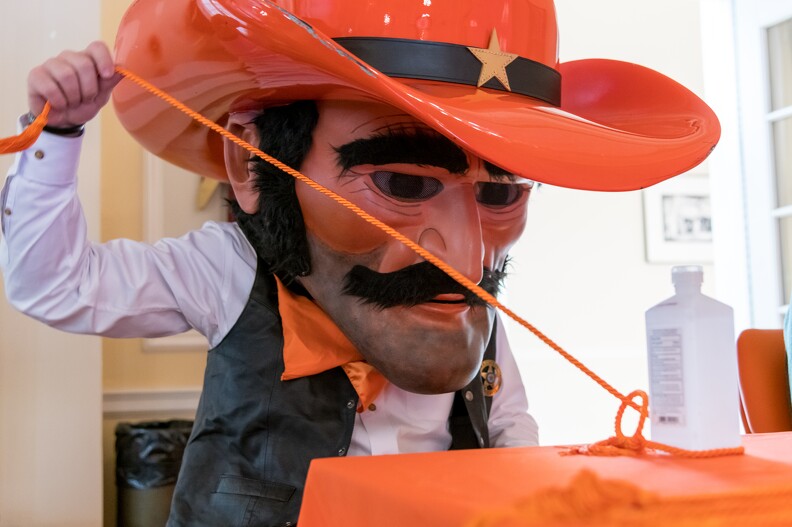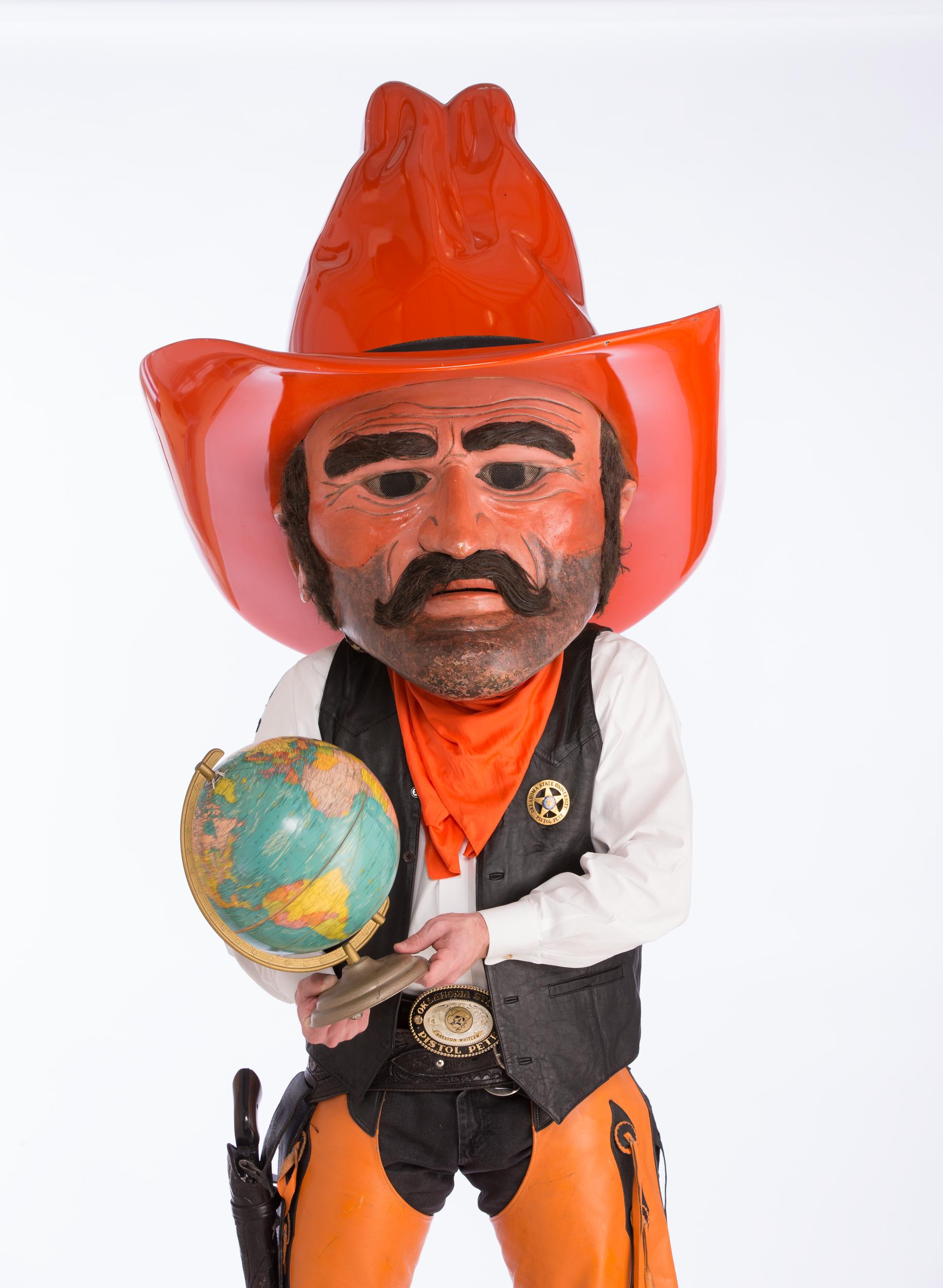13.1 What are Presentation Aids?
Click below to play an audio file of this section of the chapter sponsored by the Women for OSU Partnering to Impact grant.

“Well-designed visuals do more than provide information; they bring order to the conversation.” -Dale Ludwig
When you give a speech, you are presenting much more than just a collection of words and ideas. Because you are speaking “live and in person,” your audience members will experience your speech through all five of their senses: hearing, vision, smell, taste, and touch. In some speaking situations, the speaker appeals only to the sense of hearing. They more or less ignore the other senses except to avoid visual distractions by dressing and presenting themselves in an appropriate manner. But the speaking event can be greatly enriched by appeals to the other senses. This is the role of presentation aids.
Presentation aids are the resources beyond the speech words and delivery that a speaker uses to enhance the message conveyed to the audience. The type of presentation aids that speakers most typically make use of are visual aids: pictures, diagrams, charts and graphs, maps, and the like. Audible aids include musical excerpts, audio speech excerpts, and sound effects. A speaker may also use fragrance samples or food samples as olfactory (sense of smell) or gustatory (sense of taste) aids. Finally, presentation aids can be three-dimensional objects, animals, and people; they can also change over a period of time, as in the case of a how-to demonstration.
As you can see, the range of possible presentation aids is almost unlimited. However, all presentation aids have one thing in common: To be effective, each presentation aid a speaker uses must be a direct, uncluttered example of a specific element of the speech. It is understandable that someone presenting a speech about Abraham Lincoln might want to include a photograph of him, but because everyone already knows what Lincoln looked like, the picture would not contribute much to the message unless, perhaps, the message was specifically about the changes in Lincoln’s appearance during his time in office.
Other visual artifacts are more likely to deliver information more directly relevant to the speech—a diagram of the interior of Ford’s Theater where Lincoln was assassinated, a facsimile of the messy and much-edited Gettysburg Address, or a photograph of the Lincoln family, for example. The key is that each presentation aid must directly express an idea in your speech.
Moreover, presentation aids must be used at the time when you are presenting the specific ideas related to the aid. For example, if you are speaking about coral reefs and one of your supporting points is about the location of the world’s major reefs, it would make sense to display a map of these reefs while you’re talking about location. If you display it while you are explaining what coral actually is, or describing the kinds of fish that feed on a reef, the map will not serve as a useful visual aid—in fact, it’s likely to be a distraction.
To be effective, presentation aids must also be easy to use and easy for the listeners to see and understand. In this chapter, we will present some principles and strategies to help you incorporate effective presentation aids into your speech. We will begin by discussing the functions that good presentation aids fulfill. Next, we will explore some of the many types of presentation aids and how best to design and utilize them. We will also describe various media that can be used for presentation aids. We will conclude with tips for successful preparation and use of presentation aids in a speech.

With a clear understanding of the role visual aids play in enhancing a speech, Pistol Pete settled down at his computer to create a slide deck for his upcoming presentation on Oklahoma State University traditions. As he fired up his presentation software, Pete had four criteria in mind to ensure his visuals would be effective: improving understanding, enhancing memory and retention, maintaining audience interest, and establishing speaker credibility.
As he crafted his first slide, Pete decided to set the tone with a captivating image of a vibrant OSU tradition – the Sea of Orange Parade. He chose this image to immediately draw his audience into the world of OSU traditions. He believed that such a vivid depiction of a beloved tradition would not only grab attention but also make a lasting impression, enhancing memory and retention.
For the main body of his presentation, Pete decided to use a combination of brief text points and corresponding images. He was mindful to keep the text concise and informative, making sure it aligned with what he was saying verbally. He paired each point with relevant images or short video clips that illustrated the tradition in action. This visual reinforcement of his words aimed to improve the audience’s understanding of the traditions.
Pete knew the importance of credibility for a speaker. So, he was careful to orally cite the information referenced on his slides. This not only established his credibility but also provided a reference point for anyone interested in learning more about the traditions at OSU.
To maintain audience interest throughout the speech, Pete decided to infuse elements of surprise into his slide deck. He included a few ‘Did you know?’ slides at unexpected points, each revealing a fun or little-known fact about OSU traditions. He believed these elements of surprise would keep his audience engaged and attentive throughout his presentation.
As he clicked through his completed slide deck, Pistol Pete felt a surge of satisfaction. He believed he had created a visual aid that not only complemented his speech but would also enhance his audience’s understanding, keep them engaged, aid in memory and retention, and demonstrate his credibility. Now all that remained was to deliver his informative speech with the same enthusiasm and passion that had driven his research and preparation. Why do you think it’s important to keep text brief and to a minimum on slides? Is it important to include images on each slide?
*Pistol Pete scenarios are all based on hypothetical events and were written with the use of Chatgpt and careful editing by Speech Communication faculty.
This resource is available at no cost at https://open.library.okstate.edu/speech2713/
the resources beyond the speech words and delivery that a speaker uses to enhance the message conveyed to the audience
Discussion Questions
- What are some ways that you can establish common ground with your classmates as the audience?
- Ceally wants to educate his college classmates about the increased use of profanity in contemporary music. He would like to play sound clips of some of the most offensive lyrics to illustrate his point. Would you advise Ceally to play these songs, even though doing so might offend or upset members of the audience? Why?
- Tynisha wants to convince her audience that we need a ban on alcoholic drinks at sporting events. Her survey results suggest that nearly 85% of her audience wants to continue the current policy of allowing alcohol sales at athletic events. Should she change her purpose to fit the existing attitudes of her audience? Why or why not? How can she establish common ground with this audience?
- What are some ways you can establish ethos with your audience before, during and after your presentation?
- Why is it important to understand the demographics, psychographics, and interests of your audience? What are the pitfalls of not conducting any audience analysis before speaking?
- Think of other areas of life in which audience analysis (or something like it) is essential (for example: needs assessments, strategic planning, individualized education planning). Why is it important to first understand the unique needs of a group before offering information or solutions to problems? How can we use our understanding of audience analysis to inform our communication in other areas of life
Activities
- Identify your values. On a sheet of paper, take a minute to write down how you would spend a million dollars on others. Next, take a minute to write down how you would spend a million dollars on yourself. Finally, review your two lists and identify common themes. What you choose to spend your money on reflects your values. Here are a few ideas of some of the value categories that may include things you would buy: items for your family, home, community, health, education, adventure, luxury, or nature/environment. These would be some of the values by which you live your life.
- Cereal Box/Pizza/Stores we like to buy from/Movies/TV shows - consider the audience who would be most drawn to a certain type of cereal/pizza, etc.
of or relating to the sense of taste

